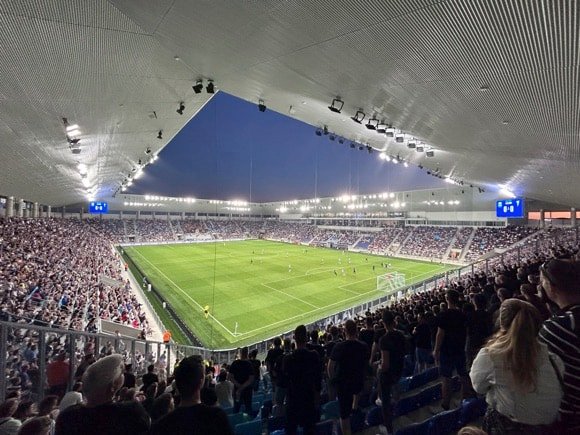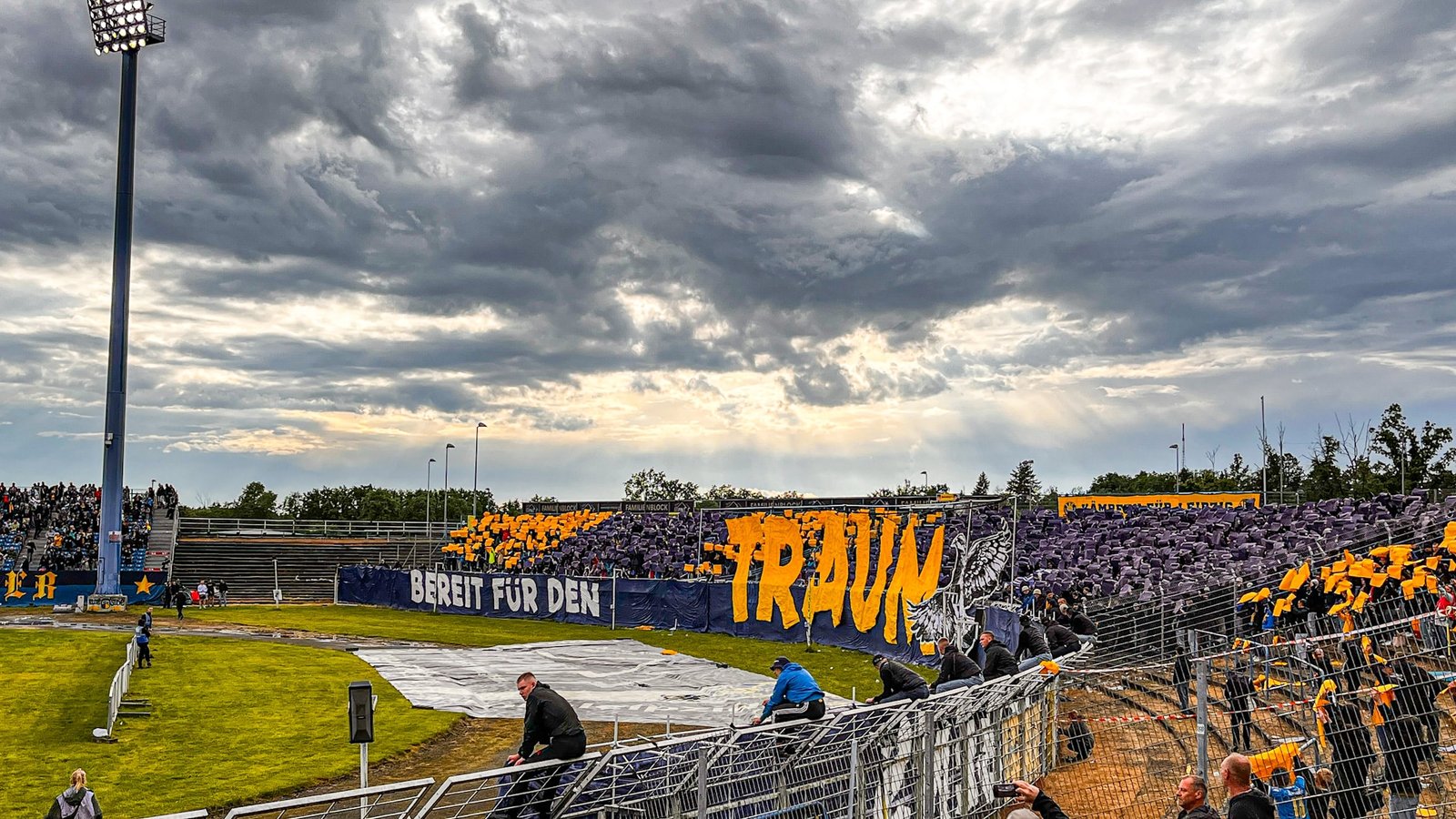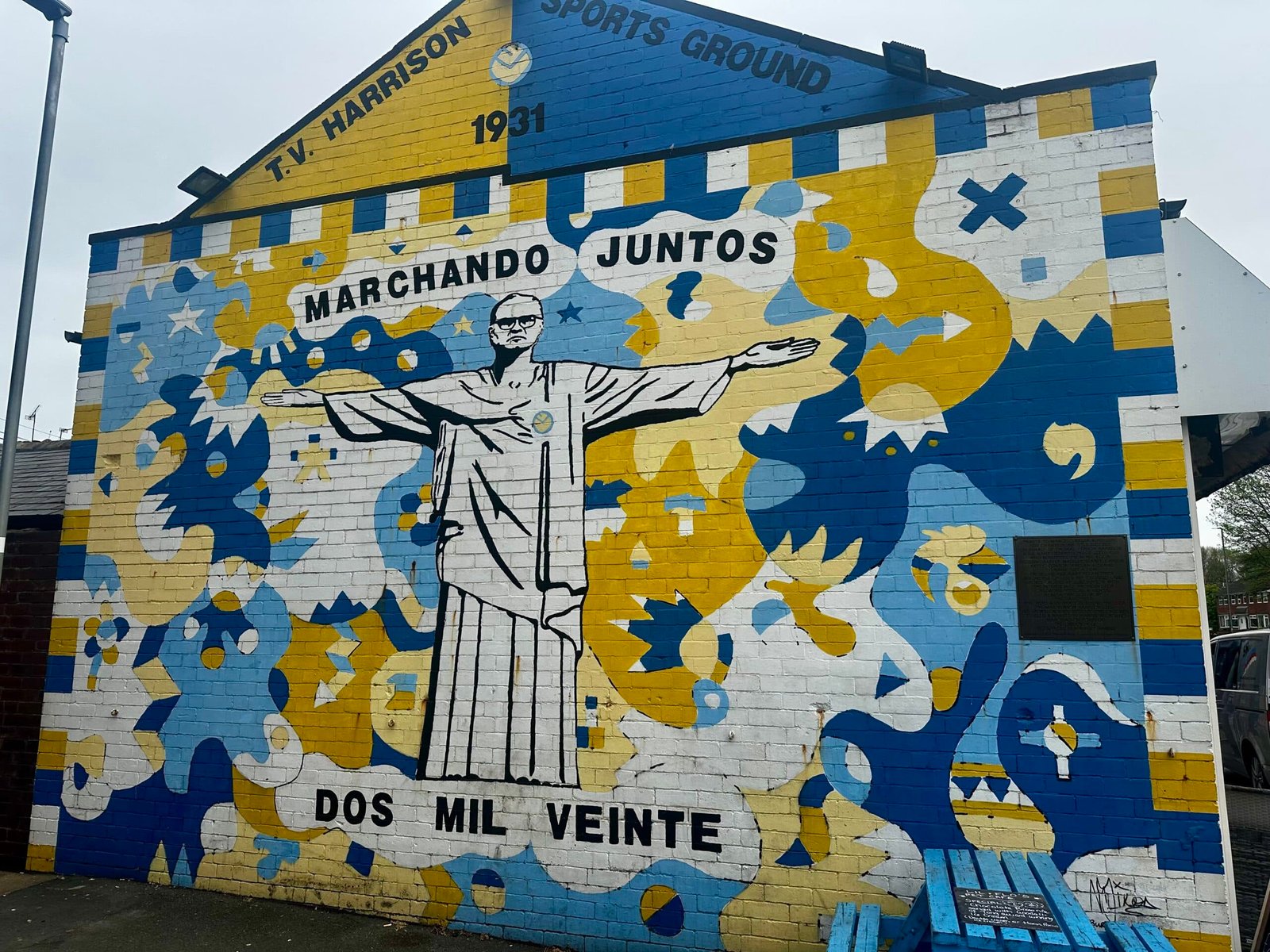Hungary funds new stadium in Osijek, about to host its first major international
Unveiled this July, the Opus Arena in Osijek is about to stage the biggest game in the Croatian season when Turkey visit for a vital Euro qualifying clash this week.
Tickets for the fixture, involving the two teams currently tied on ten points in Group D, sold out in under ten minutes. While capacity is only 13,000, the fact that the stadium got built at all is down to forces at work beyond the Drava river that flows beside the new ground.
Croatia, its domestic league dominated by Dinamo Zagreb and its average attendances low thousands, has not been particularly active in stadium-building of late. The de facto national stadium, the Maksimir in Zagreb, has long been the subject of a rebuild. The Poljud in Split is crumbling. HNK Rijeka play at a training complex that became their temporary home in 2015 and is now more or less permanent. The club’s legendary Kantrida ground, steps from the Adriatic, has been closed ever since. No-one knows when it might be ready.

Across the region, the landscape is littered with empty and dilapidated stadiums, from the Bežigrad in Ljubljana to Partizan’s ground in Belgrade.
And yet there’s one country that has done little but build football stadiums for the last ten years: Hungary. Name a top-league club in Hungary and it’s probably got a new home. Not only that, but Hungarians have been constructing arenas beyond the country’s borders, in communities whose composition is either partly or mainly Magyar, a hangover from when the nation was considerably larger a century ago.
This exercise in soft power has meant that fans in Transylvania, southern Slovakia and northern Serbia can watch their local team in a spanking new ground the envy of most in that particular domestic league.
See also Osijek.
In Croatia’s far north-east by its borders with Serbia and Hungary, Osijek is the de facto capital of Slavonia, a great swathe of Pannonian plain largely given over to agriculture. Rural villages are still populated by Hungarians, and political connections with Hungary have transformed the football scene in Croatia’s fourth-largest city.

In 2015, facing bankruptcy, NK Osijek were saved by entrepreneurs from Hungary and Croatia, Lőrinc Mészáros and Ivan Meštrović. With Hungary seeking to gain influence in communities it lost after World War I, and currently ruled by a football-mad prime minister, it is perhaps no coincidence that Mészáros was the long-term mayor of Felcsút, where Viktor Orbán spent his childhood summers. In 2018, Meštrović announced plans for a new stadium located in an area called the Pampas, west of town by the Drava river.
The cost of €65 million was part-divided between a grant from the Hungarian government and the Budapest-based Hungarian conglomerate, Opus Global, now nearly a quarter-owned by Mészáros.
The name of the stadium, the Opus Arena, is therefore no coincidence. Delayed by the pandemic, it was built by a local architect, Mislav Salitrežić, also responsible for the city’s IKEA store. Ironically, one of the first teams to visit the ground, after the inaugural domestic fixture against Slaven Koprivnica, was Hungarian: Zalaegerszeg, in the Conference League.

Despite this late 1-0 win, NK Osijek were then swept aside by little-known Turkish team Adana Demispor,
and have hardly set the domestic league alight since. Fans, nearly all Croatian in origin, have now started to turn against their Hungarian benefactors. Banners in the home end at the Opus Arena demand the removal of Hungarian club president Ferenc Szakály, about whom little is known, other than he has had business dealings in Canada.
In a recent interview with the local press, Szakály claimed that €150 million had been invested in the club since it fell into Hungarian hands in 2016, most of it accounted for by the new stadium and soccer school alongside. His modest aims where the league title was concerned, however, angered the Kohorta, the club’s ultra following. Now a concerted campaign to remove him is under way, a scenario that would be unthinkable in places where Hungarian money and management have completed changed the footballing landscape such as Dunajská Streda in Slovakia and Sfântu Gheorghe in Romania.
The Euro clash here with Turkey on October 12 was nearly played behind closed doors, Croatia fans initially blamed for trouble at a recent fixture in Armenia. The ground will now be packed solid. Whether the significant Osijek element in the crowd will use the occasion to demonstrate their displeasure with the Hungarian club management remains to be seen.











